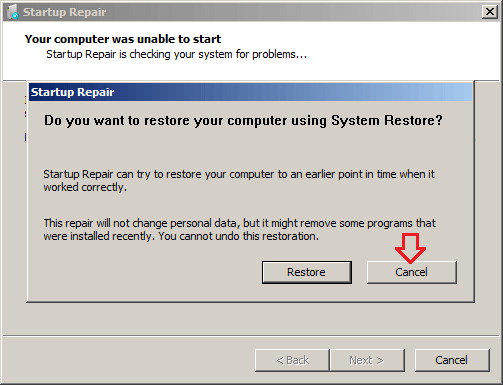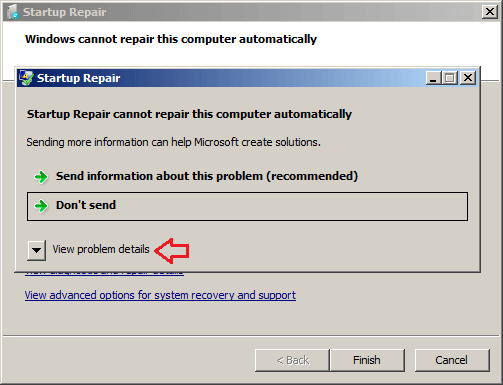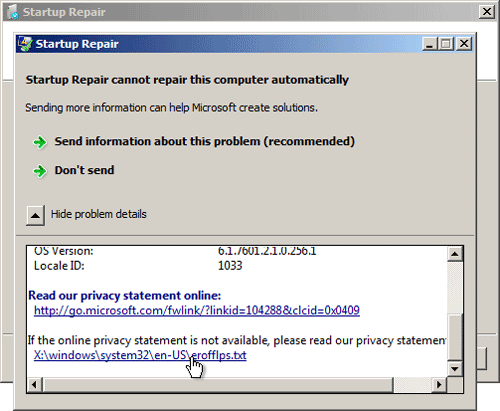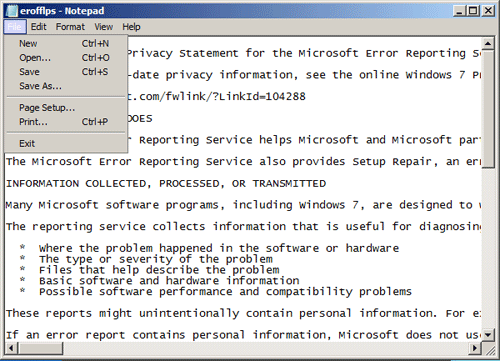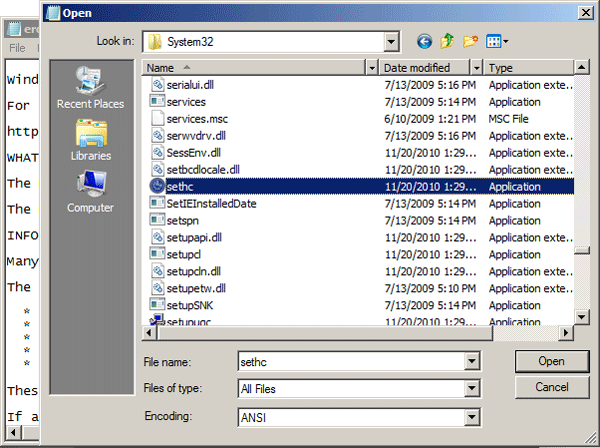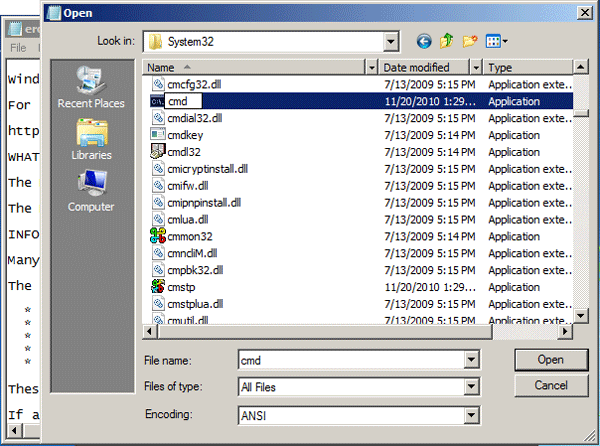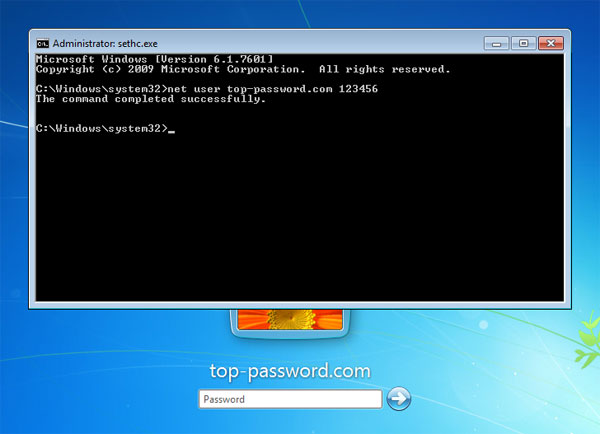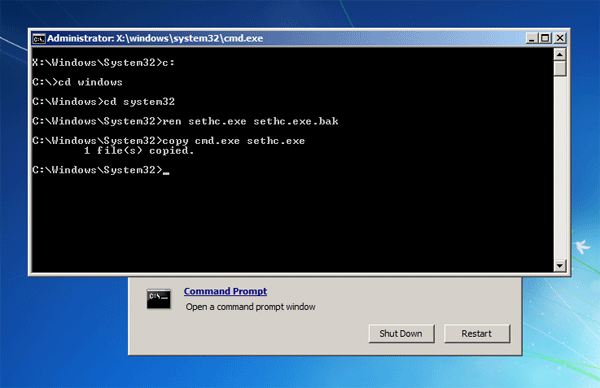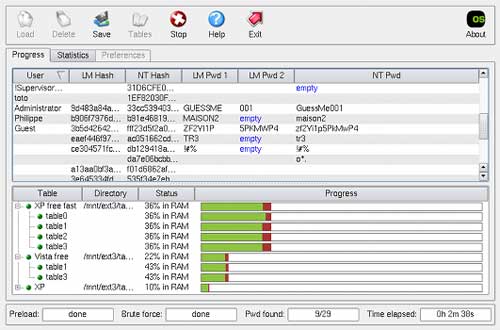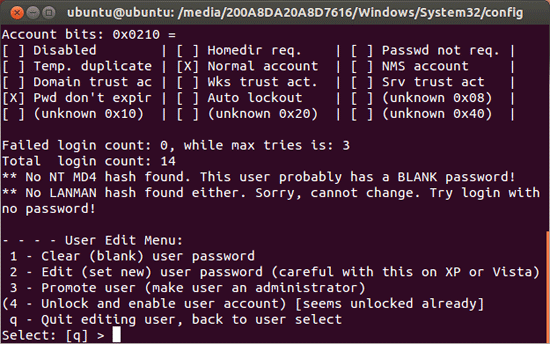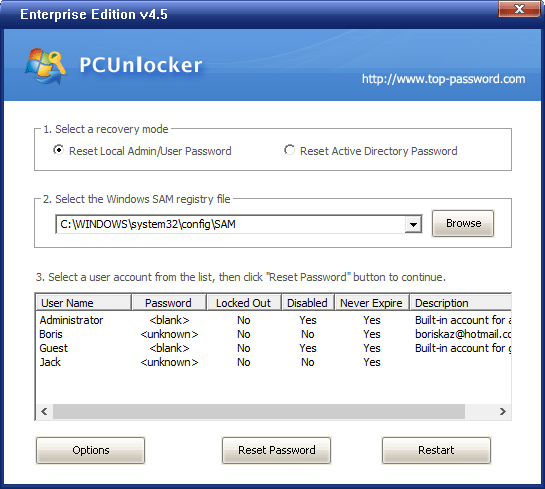- Change or reset your Windows password
- If you already know your current password and want to change it
- Reset your Windows 10 local account password
- Windows 10 version 1803 and later
- Windows 10 before version 1803
- Reset your Microsoft account password you use to sign in to your computer
- Troubleshoot problems signing in
- Reset your password
- More help with passwords in Windows 8.1
- Reset your password
- My computer is in a workgroup
- Change your password
- How to Reset Windows 8 / 7 Password without A Disk or Software
- How to Reset Lost Windows 8 / 7 Password without Disk?
- 5 Ways to Reset Windows 7 Password without A Reset Disk
- Option 1: Windows Installation Disc
- Option 2: Ophcrack
- Option 3: Chntpw
- Option 4: PCUnlocker
- Option 5: Reset Windows 7 Password Through A Backdoor
Change or reset your Windows password
If you forgot or lost your password for Windows 10, Windows 8.1, or Windows 7, you may be able to change or reset it. To get started, choose your version of Windows from the Select Product Version drop-down menu.
If you already know your current password and want to change it
Select Start > Settings > Accounts > Sign-in options . Under Password, select the Change button and follow the steps.
Reset your Windows 10 local account password
If you’ve forgotten or lost your Windows 10 password for a local account and need to sign back in to your device, the below options might help you get up and running. For more info on local standard vs. administrative accounts, see Create a local user or administrator account in Windows 10.
Windows 10 version 1803 and later
If you added security questions when you set up your local account for Windows 10, then you have at least version 1803 and you can answer security questions to sign back in.
After you’ve entered an incorrect password:
Select the Reset password link on the sign-in screen. If you use a PIN instead, see PIN sign-in issues. If you’re using a work device that’s on a network, you may not see an option to reset your password or PIN. In that case, contact your administrator.
Note: If you don’t see security questions after you select the Reset password link, make sure your device name isn’t the same as your local user account name (the name you see when you sign in). To see your device name, right-click Start in the taskbar, select System, andscroll to the Device specifications section. If the device name is the same as your account name, you can create a new administrator account, sign in as an administrator, and then rename your PC (when you view your device name, you can also rename it).
Answer your security questions.
Enter a new password.
Sign in as usual with the new password.
Windows 10 before version 1803
For versions of Windows 10 earlier than 1803, local account passwords can’t be reset because there are no security questions. You can reset your device to choose a new password, however this option will permanently delete your data, programs, and settings. If you’ve backed up your files you’ll be able to restore your deleted files. For more information, see Recovery options in Windows 10.
To reset your device, which will delete data, programs, and settings:
Press the Shift key while you select the Power button > Restart in the lower-right corner of the screen.
On the Choose an option screen, select Troubleshoot > Reset this PC.
Select Remove everything.
Warning: Resetting your device will permanently delete data, programs, and settings.
Reset your Microsoft account password you use to sign in to your computer
On the sign-in screen, type your Microsoft account name if it’s not already displayed. If there are multiple accounts on the computer, choose the one you want to reset. Below the password text box, select I forgot my password. Follow the steps to reset your password.
Troubleshoot problems signing in
If you’re still having trouble signing to your account, see more solutions in Troubleshoot problems signing in.
Reset your password
Note: If you’ve forgotten your Windows 10 password, see Reset your Windows 10 local account password.
If you’ve forgotten your Windows 8.1 password, there are several ways to retrieve or reset it:
If your PC is on a domain, your system administrator must reset your password.
If you’re using a Microsoft account, you can reset your password online. For more info, see How to reset your Microsoft account password.
If you’re using a local account, use your password hint as a reminder.
If you still can’t sign in, you must reinstall Windows. For Windows RT 8.1, contact your PC manufacturer.
More help with passwords in Windows 8.1
If you forget or lose your password, see Reset your password above to reset or recover it.
If you think your Microsoft account password has been compromised or stolen by someone with malicious intent, we can help. For more info, see When you can’t sign in to your Microsoft account.
If you’re signing in to only your local PC, yes. However, we recommend that you keep your PC more secure by using a strong password. When you use a password, only someone who knows it can sign in. If you want to sign in to Windows with a Microsoft account, a password is required. For more info, see Can I sign in to Windows without a password? To learn more about Microsoft accounts and local accounts, see Create a user account.
Stronger passwords contain a variety of characters, including uppercase and lowercase letters, numbers, and symbols or spaces. A strong password should also be something that is difficult for a stranger to guess or crack. It shouldn’t contain a complete word, or easy-to-find details like your real name, your user name, or your birth date.
If you’re signing in to a Microsoft account, your password is limited to 16 characters. For more info about Microsoft accounts, see Create a user account.
You can update your password regularly to keep it more secure. If your PC isn’t connected to a domain, follow these steps:
Swipe in from the right edge of the screen, tap Settings, and then tap Change PC settings.
(If you’re using a mouse, point to the lower-right corner of the screen, move the mouse pointer up, click Settings, and then click Change PC settings.)
Tap or click Accounts, and then tap or click Sign-in options.
Tap or click Change your password and follow the instructions.
If your PC is connected to a domain, your system administrator might manage how frequently you must change your password. To do so, choose one of the following:
If you’re using a keyboard, press Ctrl+Alt+Delete, tap or click Change a password, and follow the instructions.
If you’re using a tablet, press and hold the Windows button, press the power button, and then tap or click Change a password and follow the instructions.
It depends on whether you’re using a third-party email address. If your email address ends in outlook.com, hotmail.com, live.com, or another Microsoft service, changing the password for your Microsoft account also changes it for that email service.
But you can use any email address for your Microsoft account, even an email address from a third-party web-based mail service like Google Mail or Yahoo! Mail. When you choose a password for your Microsoft account, it doesn’t change the password you might need to use to sign in to web mail on a third-party site.
Create a picture password to sign in with gestures instead of by entering characters.
Swipe in from the right edge of the screen, tap Settings, and then tap Change PC settings.
(If you’re using a mouse, point to the lower-right corner of the screen, move the mouse pointer up, click Settings, and then click Change PC settings.)
Tap or click Accounts, and then tap or click Sign-in options.
Under Picture password, tap or click Add, and then follow the instructions.
When you choose a password for your user account, it’s important to pick something you can remember. You’re going to need it again later!
Of course, you can also write your password down and keep it in a safe place. Taped to the underside of your laptop or the inside of your desk drawer is probably not a good idea, however. If you do write your password down, be sure to keep it separate from your PC.
For added security, use different passwords for different purposes. For example, it’s a good idea to keep distinctly different passwords for a social networking account and your online bank account.
If you do forget or lose your password, there are still several things you can try to reset or recover it. For more info, see Reset your password above to reset or recover it.
Reset your password
My computer is on a domain
Select the Start button 

On the Users tab, under Users for this computer, select the user account name, and then select Reset Password.
Type the new password, confirm the new password, and then select OK.
My computer is in a workgroup
If you type the wrong password when you attempt to log on, Windows displays a message that the password is incorrect. Select OK to close the message.
Select Reset password, and then insert your password reset disk or USB flash drive.
Follow the steps in the Password Reset wizard to create a new password.
Log on with the new password. If you forget your password again, you can use the same password reset disk. You don’t need to make a new one.
Note: If an administrator resets your password, you might lose access to some of your files.
Change your password
Press Ctrl+ Alt+ Delete, and then select Change a password.
Type your old password followed by a new password as indicated, and then type the new password again to confirm it.
Note: If you are logged on as an administrator, you can create and change passwords for all user accounts on the computer.
Warning: If you use an administrator account to change a password for another account, any encrypted files or e mail messages for that other account will no longer be accessible to the person who was using that account.
How to Reset Windows 8 / 7 Password without A Disk or Software
If you’ve forgotten your Windows password and you don’t have a CD or USB drive laying around, there’s no need to worry. In this article we’ll walk you through the steps to reset lost Windows 8 / 7 password without using any CD, USB or software.
Of course, if you do have a PCUnlocker Live CD, you can reset your password the easy way with a few mouse clicks. The following trick works with local account only. If you’re using a Microsoft Account to login to your computer, you’ll need to use PCUnlocker to reset your Microsoft Account password.
How to Reset Lost Windows 8 / 7 Password without Disk?
- Turn on your computer. While the computer is coming up and you can see it saying «Starting Windows». Hold down the Power button for at least 5 seconds to force power off your computer.
- When a sudden power loss is detected, the next time you turn on your computer and it will ask you if you want to launch startup repair or start normally. Choose the Launch Startup Repair (recommended) menu.
Startup Repair will boot up and take a little while. When it asks you if you want to restore your computer to an earlier point, click Cancel.
The Startup Repair Tool begins analyzing startup log files for clues as to the source of the problem and then launches a series of diagnostic tests to determine the cause of the startup failure. After a long time, you will get a dialog saying that Startup Repair cannot repair this computer automatically! Click on View problem details.
Now scroll down to the end of the Detail Report. Click on the last link to read Microsoft’s offline privacy statement.
Notepad will come up with the privacy statement in it. Click on the File menu and then Open.
In the File Open dialog box, change the Files of type option to All Files. Browse to the Sticky Keys application — C:\windows\system32\sethc.exe. Rename this file as a backup file: I named it «sethc-copy».
Now find the cmd.exe file in the same folder. This is your Command Prompt. rename it to sethc.exe.
Then close out of all the dialog boxes and Finish, so that the computer restarts.
5 Ways to Reset Windows 7 Password without A Reset Disk
What to do if you forgot Windows 7 password and don’t have a reset disk? If you’ve tried all the passwords you think might be correct and you still can’t login, you need to reset your password with unofficial methods. Here are 5 alternative tools to Windows password reset disk:
Option 1: Windows Installation Disc
All you need with this method is a copy of Windows 7 installation CD. Here’s the process of resetting forgotten Windows 7 password with a install CD:
- Boot off the Windows installation CD and select the Repair your computer option.
- Click Command Prompt from the list of recovery tools.
I presume your OS is installed in drive C. Replace C with appropriate drive letter for other cases. In the CMD type the following commands one by one, press Enter after each.
Option 2: Ophcrack
Ophcrack allows you to find out the user’s password instead of bypassing it. When you boot from the Ophcrack Live CD, it automatically launches the graphical Ophcrack tool. It will list all the user accounts it has found on your computer under the User column, and attempt to recover Windows 7 user passwords.
Unless your password is fairly complicated, contains lots of characters or you’re on a dated machine, the tool shouldn’t take long to crack your passwords. When it’s done, the passwords are listed in the NT Pwd column. If the password field corresponding to your user is empty, there is no password for that user.
Option 3: Chntpw
Chntpw is a free Linux utility that could be used to reset Windows 7 user account password. It needs to be run from a Linux Live CD. Here’s how to reset Windows 7 password by running chntpw from Ubuntu boot media:
- Grab a copy of Ubuntu ISO image from its official website. Burn it to a USB thumb drive with ISO2Disc.
- Boot up your computer using that bootable USB drive.
- Open a terminal window and run the following command to install chnptw:
- Open all partitions to find the drive that contains Windows installation. Note down the disk identifier from Nautilus title bar. In my case, this disk identifier is 200A8DA20A8D7616. This identifier will vary in your case. Change it accordingly in next command.
- Type cd /media/200A8DA20A8D7616. Hit Enter.
- Type cd Windows/System32/config/ and press Enter.
Type sudo chntpw SAM and press Enter. You will get a menu with all users of the system. Default is Administrator. Type 1 and press Enter to clear user password.
Option 4: PCUnlocker
All of the above methods require you to run some Linux or DOS commands. If you’re a computer novice, then PCUnlocker should be your better choice.
- Download the self-extracting Zip file of PCUnlocker package.
- Double-click the zip file to see its contents. When prompted, drag the pcunlocker.iso file out of the window to your desktop. Burn the ISO file to your CD (or USB drive) with the freeware ISO2Disc.
- Boot your locked computer from PCUnlocker Live CD.
After the PCUnlocker program launches, select one of your Windows accounts and click Reset Password button.
Option 5: Reset Windows 7 Password Through A Backdoor
What to do if your computer doesn’t have a CD drive and it also doesn’t support booting from USB? Is it possible to reset lost Windows 7 password without using any disk? Check out this article that explains how to reset Windows 8/7 password through a backdoor. This backdoor has been around for a very long time and is not really an exploit which is why Microsoft does not intend to patch and block it.

